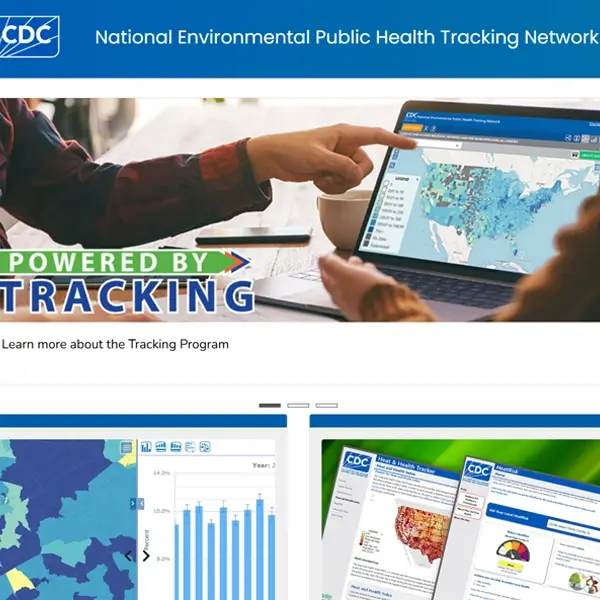While nothing will beat having your home or business tested, looking at state and county radon test results can still provide valuable insight into potential risk. For years, many relied on the EPA’s Radon Maps for this purpose. However, as we have covered previously, those maps are severely outdated and offer very limited detail. A more current and useful resource is the CDC’s National Environmental Public Health Tracking Network.
What is the National Environmental Public Health Tracking Network?
The National Environmental Public Health Tracking Network is a centralized platform that compiles health and environmental data from across the U.S. Developed by the CDC in 2002 in response to widespread gaps in environmental disease monitoring, the network connects data from federal, state, and local sources. Its goal is to make environmental health data more accessible, so public health professionals, researchers, and community members can make informed decisions based on consistent, reliable information.
Among the many environmental hazards it tracks, the network includes data on radon. Through its interactive Data Explorer, users can access county-level radon test results submitted by participating state agencies and certified laboratories. Data is viewable nationally by county or within individual states, and users can compare figures across multiple years. While not a complete record of all testing nationwide, it offers a valuable look at how radon levels vary geographically, and how those levels may be changing over time.
Limitations in the Southwest
Despite the known health risks of radon exposure, radon testing and reporting policies remain inconsistent across the country. In the Southwest, this inconsistency is particularly stark. Unlike Colorado, which has statewide oversight and radon-specific regulations, other southwestern states, including New Mexico, Arizona, Texas, Nevada, Utah, and Oklahoma, have little to no official infrastructure in place for radon testing or public reporting. Because of this, the radon data available through the Tracking Network in these states is limited almost entirely to voluntary submissions from private labs.
This leads to significant data gaps in many counties and underrepresents the full extent of radon exposure risk. Without mandatory testing or consistent reporting standards, many high-risk areas in the Southwest may appear deceptively safe on national maps, simply because little to no data has been collected or shared. These limitations highlight a major challenge: the absence of data does not equal the absence of radon. In fact, in states without comprehensive testing programs, the risk may be even greater because so few properties have ever been checked.
Ready for Real Peace of Mind?
The CDC’s Tracking Network is helpful, but it doesn’t replace actually testing your property. If you truly want to understand your radon risk, direct testing is the way to go. Southwest Radon Eliminators can provide clear, accurate results specifically for your home or business, offering long and short-term testing as well as OM&M maintenance plans. Stop worrying and start breathing easier – contact us today to schedule your radon test.
